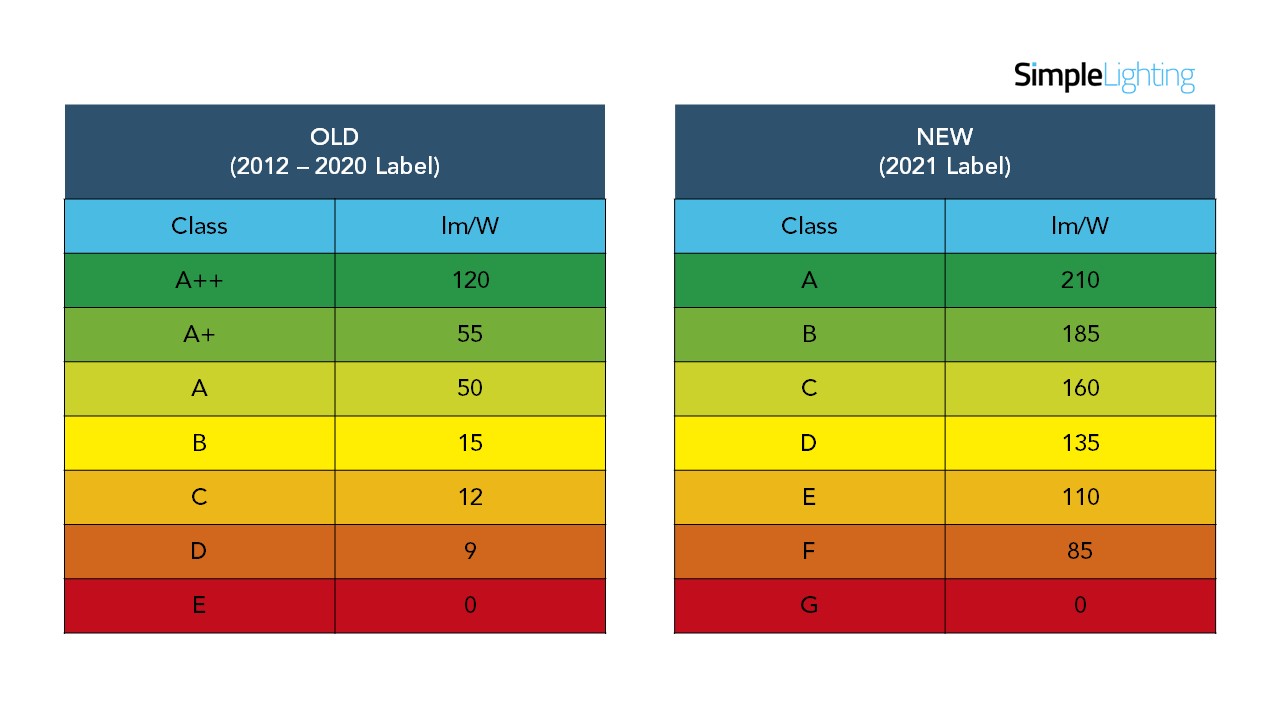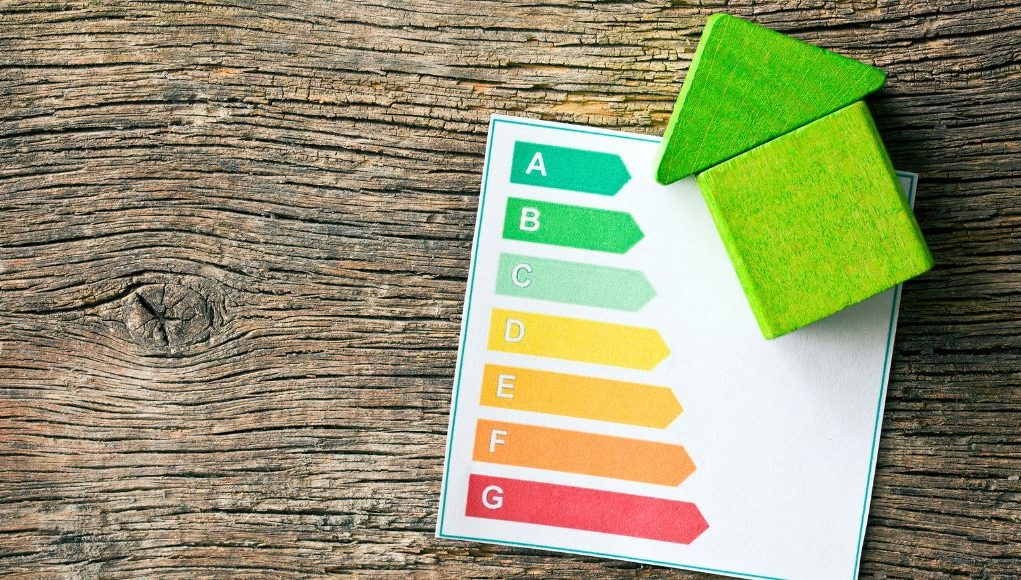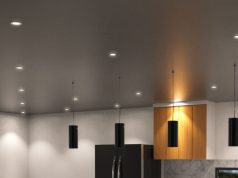Did you see the new energy label on the packaging of your LED lights? If you did notice the difference and saw that some LED lamps have an E rating, don’t be worried because they’re still energy efficient! The reason behind the changes is the recent update in the rating system in Europe and the UK.
Since September 1, 2021, the energy labels that indicate the level of energy efficiency of an LED bulb have begun transitioning into a new system which will be entirely in place by March 1, 2023.
The shift was prompted by the new EU 2019/2020 Single Lighting Regulation (SLR) and the new EU 2019/2015 Energy Label Regulation (ELR) which aims to further protect the environment, enhance the products’ sustainability and increase consumer protection. The new regulations have been included in the UK law under The Ecodesign for Energy-Related Products and Energy Information (Lighting Products) Regulations 2021 2021 No. 1095.
Recently developed LED lights are becoming increasingly energy-efficient, and the latest releases are classified in the top category (A, A+, A++). So, instead of adding more plus to the A class, the new energy label has been reconfigured into a straightforward A to G rating.
Although the energy efficiency rating has changed, the products’ energy efficiency remains the same – only the letter to which it’s designated. It will still consume the same quantity of energy and will cost the same to use.
With this new system, it’ll be easier to know which LED bulbs are the most energy-efficient, but it’ll give more room for progress. The current most energy-efficient LED bulbs will be rated F or G in the new ratings, allowing manufacturers to improve their products and design even more energy-efficient LED lamps.
Old Vs New Labels: How Do They Differ
The old rating system has lost clarity as the industry develops new lighting solutions. The efficiency requirements in the old regulations have been maxed out, so most products are labelled A++, A+, or A. Because of this, a new system is necessary to shed light on this and enhance the understanding of the energy rating classification.

In the old EU Energy Label, you’ll see a coloured scale from green to red with the letter scale from A+++ to E. Alternatively, in the new EU and UK Energy Label, you’ll see the same green to red scale but a letter scale from A to G instead. In the new rating system, more energy efficiency is required to achieve for each level.
Take note that most products that are A+++ in the old energy rating will now be rated C or D in the new energy rating.
New Energy Efficiency Conditions
To help you better visualise, what used to be 120lm/W in the A++ level before 2021 will now be rated E in the new energy efficiency conditions. Why lighting products have lower ratings now is not because they have become less efficient. They still consume the same energy they always have, but now the energy efficiency ratings have stricter conditions and higher requirements. Nothing changed with your LED light bulbs; the system was adjusted.
The old energy levels A+, A++ and A+++ are now replaced by A to G, with B and C ratings ranking as the most energy-efficient lights.
Unfortunately, you cannot compare the old label with the new one because the requirements differ. The focus has shifted from wattage to lumens, prioritising the fixture’s brightness.
Contents of the New Energy Labels
As per the new regulations, the new energy labels must contain the following information:
- Supplier’s name and model number (manufacturer’s name and LED bulb’s model number).
- Energy Efficiency Rating (new energy rating with A to G scale).
- Power Consumption (kWh/1000h consumed by the LED bulb; rounded up to the next single wattage).
- QR Code (access to a detailed product info sheet registered in the database of the European Commission’s EPREL).
FAQs About the New Energy Label
Why are there two energy labels on the packaging of my LED bulb?
For the past 20 years, the energy efficiency of LED lights has dramatically upgraded. Because of this, information on the energy labels must change to guarantee that you’ll be able to get the best products. With the new information being introduced, the old and the new labels will be featured on the packaging.
Why do the two energy labels have different contents for the same product?
The new label contains the new energy rating of the product. Although it may seem strange, the new label is updated to factor in how you use your lights at home. Also, it includes more detailed info on the product’s features. This will give you a more realistic and accurate idea of how the lights will perform throughout their lifespan.
Understanding energy labels can be confusing and complicated. We hope this guide gives you an overall idea of what it is and how it affects your products. Remember, you don’t have to worry if you purchased an LED lamp with a D or E rating according to the new label. Just check the lumens output and ensure that it has a low wattage count. If you have any lighting needs, visit our website, Simple Lighting! We have an extensive collection of indoor, outdoor and commercial lights.













